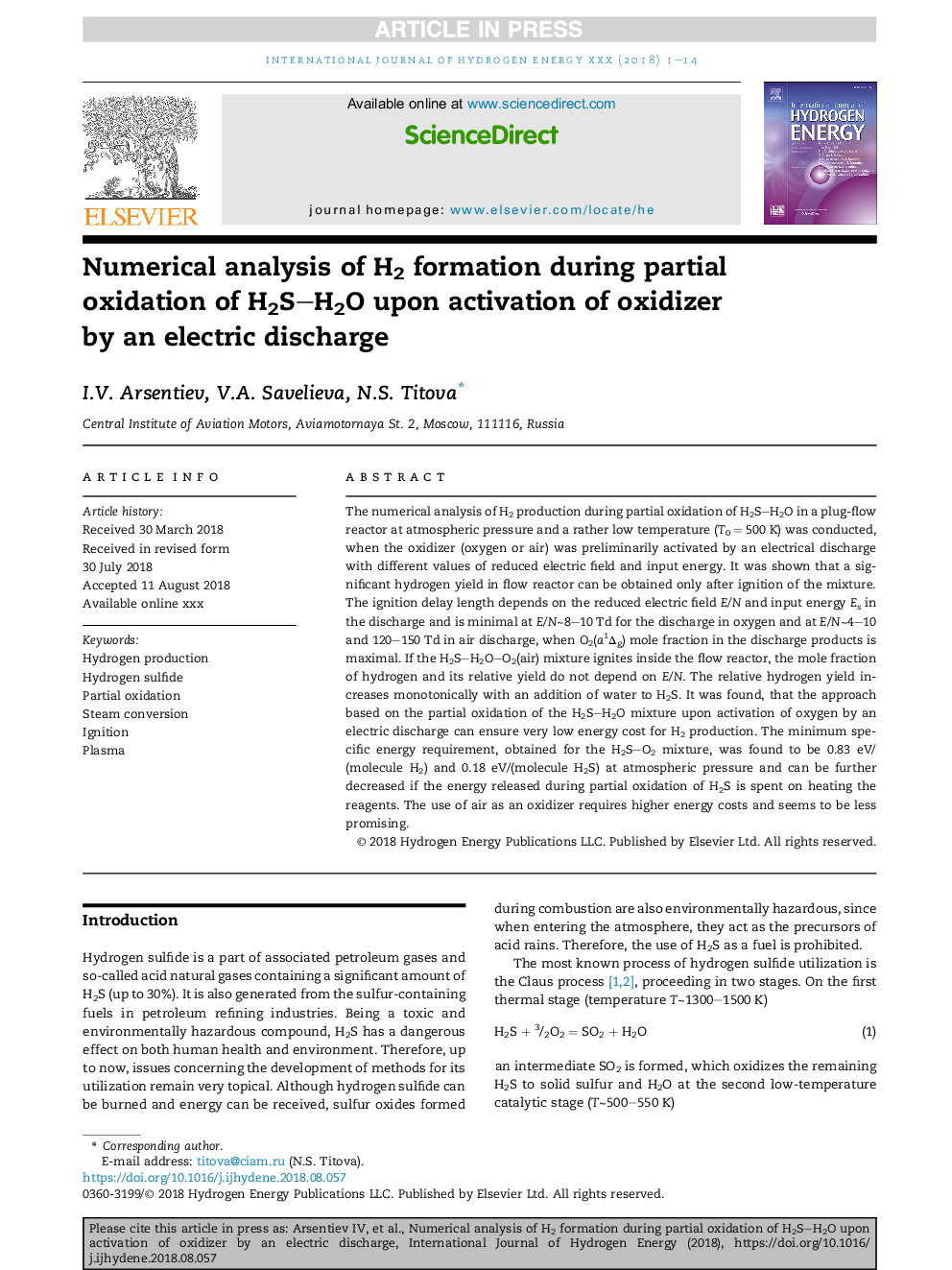| Article ID | Journal | Published Year | Pages | File Type |
|---|---|---|---|---|
| 11011614 | International Journal of Hydrogen Energy | 2018 | 14 Pages |
Abstract
The numerical analysis of H2 production during partial oxidation of H2SH2O in a plug-flow reactor at atmospheric pressure and a rather low temperature (T0Â =Â 500Â K) was conducted, when the oxidizer (oxygen or air) was preliminarily activated by an electrical discharge with different values of reduced electric field and input energy. It was shown that a significant hydrogen yield in flow reactor can be obtained only after ignition of the mixture. The ignition delay length depends on the reduced electric field E/N and input energy Es in the discharge and is minimal at E/Nâ¼8-10 Td for the discharge in oxygen and at E/Nâ¼4-10 and 120-150 Td in air discharge, when O2(a1Îg) mole fraction in the discharge products is maximal. If the H2SH2OO2(air) mixture ignites inside the flow reactor, the mole fraction of hydrogen and its relative yield do not depend on E/N. The relative hydrogen yield increases monotonically with an addition of water to H2S. It was found, that the approach based on the partial oxidation of the H2SH2O mixture upon activation of oxygen by an electric discharge can ensure very low energy cost for H2 production. The minimum specific energy requirement, obtained for the H2SO2 mixture, was found to be 0.83Â eV/(molecule H2) and 0.18Â eV/(molecule H2S) at atmospheric pressure and can be further decreased if the energy released during partial oxidation of H2S is spent on heating the reagents. The use of air as an oxidizer requires higher energy costs and seems to be less promising.
Related Topics
Physical Sciences and Engineering
Chemistry
Electrochemistry
Authors
I.V. Arsentiev, V.A. Savelieva, N.S. Titova,
